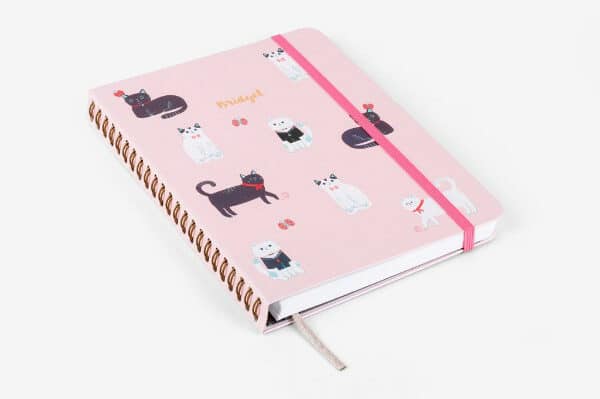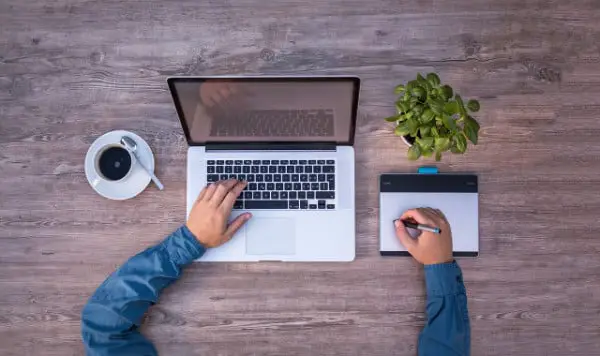Line25 is reader supported. At no cost to you a commission from sponsors may be earned when a purchase is made via links on the site. Learn more
With the continued surge in the use of technology, the demand for graphic designers is constantly on the rise, and the job is constantly evolving. Customers become pickier, competitive stakes are heightened, and new, innovative tools reshape the profession.
This is not to say that technology can make or break a graphic designer — ideas and execution will always be the most important aspects of the job, but often enough the right graphic design tools can make the execution a lot faster and more efficient.
Some designers can get stuck using outdated tools. For that reason, we’ve compiled a shortlist of essential tools for modern graphic designers that will help you work smarter, not harder. With the right tools, you can consistently deliver the best product to your client in a timely manner.
Graphic Design Tools That Are Essential
The Hardware
Though design takes place on most digital platforms nowadays, it’s important to still have concrete items that will help you navigate these platforms and bring your ideas to life in a digital space. Here are the best of the best physical items to keep you company as you delve into your design.
Pencil and Paper
Yes, it may seem archaic, but many designers prefer to do their initial sketches on paper to lock down the basic concepts. Plus, if you’re stuck, even just idly doodling can help to open up your mind and unlock your creativity. Prismacolor Col Erase Pencils come highly recommended for sketching because of their vibrant colors and easy erasing. Sketching with color is often more fun — it doesn’t feel as permanent as graphite or pen, so you can really get weird and wild with it, which often ends up generating the best ideas.
If you’re a hardcore pen user, you can’t do better than the Uni-Ball Signo UM-151 Gel Pens. With the smoothest ink flow you ever did see and a no-smudge finish, this pen is a gem for lovers of clean lines and polished finishes. Plus, you won’t have to invest your life’s savings into it, unlike the more hardcore of fancy pens.

My favorite from Mossery — a super cute cat cover with high-quality paper sandwiched in between. Image courtesy of Mossery.
In terms of sketchbooks, the classic Moleskine is always a great option, but if you want a bit more flair, you should consider trying one of the incredibly adorable sketchbooks from Mossery. You can choose from 34 designs, watercolor, or mixed media, and even have your name on the cover — at no extra cost to you!
Wacom Intuos Pro

The Intuos Pro comes in various sizes and even has a paper edition. Image courtesy of Image Science.
A tablet is an essential tool for all things graphic design, and no tablet is more design-friendly than the Wacom Intuos Pro. This super-sensitive device can feel 8,192 levels of pressure and up to 60 degrees of tilt, making a drawing on your computer almost easier than drawing with pencil and paper. If you still like the feeling of paper under your hand, however, the Intuos Pro Paper Edition includes an electronic pen that operates without batteries or a power cord and can actually draw on paper while at the same time transferring that drawing through to the tablet. Cool, right?
Google Pixel – Latest Model

This phone has low-light capabilities that most of its competitors can’t even dream of. Image courtesy of Gear Patrol.
iPhone who? We all know that Google is taking over the world, and the latest Google Pixel just confirms those suspicions further. This phone has the best camera on the market, wrapped up in a neat package along with OLED screen and completely lag-free software. It truly is the best phone for on-the-go drawing, using snazzy new apps, or testing out mobile website designs.
The Software
Hardware has taken a few steps forward over the years, but software has improved — and is still improving — by leaps and bounds. It’s hard work to keep up with all the innovations, but it’s so worth it for the improvements in efficiency and quality of work. Plus, we’ll make it easy for you — all the software you need is right here.
Adobe Creative Cloud

Adobe programs have long remained the industry standard for professional graphic designers, and for good reason.
The Adobe Creative Cloud Express is your one-stop shop for all the essential design programs, including Photoshop, Illustrator, InDesign, After Effects, and so much more. Of course, it takes a pretty significant investment to have all these tools right at your fingertips — $52.99 per month — but these programs are the kinds of instruments that you will use constantly once you make that financial leap. Adobe now also offers several mobile apps that will allow you to do your work from anywhere, and they’re all included in Creative Cloud.
Dropbox

Look at all those files, stored, backed up, and ready to share. Image courtesy of Dropbox.
Design projects usually end up as massive files that can be a pain in the neck to store, and even more of a pain in the neck to share. Cloud storage offers a solution to both problems. Dropbox premium plans can offer individuals and teams 2 TB of storage or more — and if you’re wondering how much 1 TB of storage is, that’s the equivalent of four 256 GB Windows or Macbook laptops. You’ll never have to worry about having room for your latest work, and you’ll be able to access it all from any device. Plus, you can share these files easily from any device directly in Dropbox, or just by sending a link.
Pantone Matching System

Colors may look flawless on your screen, but when they print, you might find that you’ve been deceived.
Working digitally has its drawbacks, though they’re few and far between compared to its benefits. One of the most concerning of these is the differences between colors on the screen and tones in a print. It’s a common problem and not the easiest to fix. Luckily, the Pantone Matching System offers a solution, with thousands of swatches that show designers exactly how their colors will look when printed.
Conclusion
All these tools will help set you up for success, but remember that no tool is more important than your own brainpower. Tools are only an extension of the person using them, and creativity, hard work, and practice are what truly make a great graphic designer. That being said, these tools can also work to make your life easier and your work better — that’s why so many people use them. But, whatever tools you use, however you invest your money, never lose that creative spark that got you into the job in the first place.
This is a sponsored post for Dropbox. All opinions are my own. Dropbox is not affiliated with nor endorse any other products or services mentioned.


Maybe Affinity instead of Adobe unless you work with video. Is a lot way cheaper.
Come on, neither is a graphics tablet (or pen display) of the WACOM brand “essential” for “modern” grphic designers nor is using the apps of ADOBE’s Creative Cloud.
I have used both for years (and still do some of the time), but I’m quite happy actually having choices these days – be it the design apps by Affinity/Serif or tablet hardware by several upcoming manufacturers.
It’s about time we graphic designers put an end to our being unfairly milked by gone greedy mega companies like ADOBE and focus again on the basics of our own creativity and our very intellectual and artistic skills. These can certainly be made into real products that speak to people using other tools than those of the “industry standard”.
Otherwise we might end as people who just more or less demonstrate the features of that software and hardware currently (still) ruling the market rather than making real our aesthetic visions with whatever tools we think appropriate in a functional as well as economical sense.
I find these “tools” hardly essential. Dropbox? Essential? The Pixel 3? Essential?
Nah.
C’mon Iggy. You can do better!
Well… that was a bit disappointing. I was expecting something more like your previous article “30 Must Have Tools for Web Designers and Developers”, but this just felt like a list of random sponsored items.
And quite honestly, I’d disagree with Adobe software as being “‘essential for modern designers”, and the Pantone chart? C’mon. I haven’t printed with Pantone ink in about 10 years. A CMYK colour chart makes way more sense for flyers, brochures, adverts and stationery.
This feels like someone had lost track of the time and was pressured to deliver something by the end of the day.